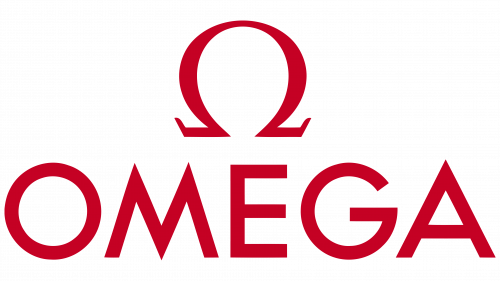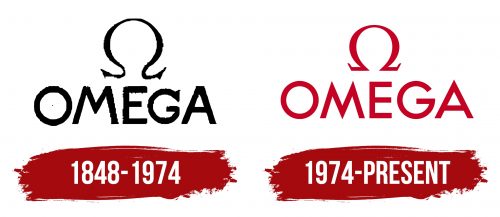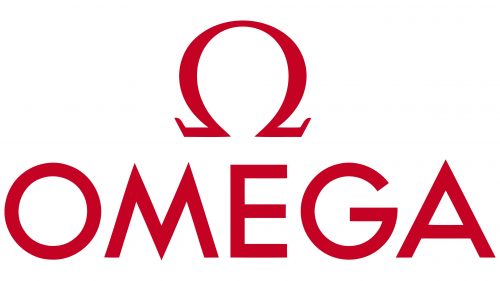The Omega logo reflects ambition and confidence, symbolizing energy and the drive for victory. From the name itself to the fine, precise elements, the design conveys dynamism and determination. The brand has reached a global scale and embedded the philosophy of eternal existence using ancient Greek symbols in its identity. This underscores the company’s desire to remain relevant and influential for years, affirming its commitment to excellence and constant progress.
Omega: Brand overview
Omega’s history began in 1848 when 23-year-old Louis Brandt established a modest watch assembly workshop in the Swiss village of La Chaux-de-Fonds. Brandt assembled timepieces using components purchased from local producers and sold them throughout Europe. His reputation for producing precise and reliable watches helped his business grow rapidly.
In 1877, just before his passing, Louis Brandt handed control of the company to his sons, Louis-Paul and César. The brothers continued their father’s work, and in 1880, they moved the business to Biel, a larger city with more opportunities.
A turning point in the company’s history came in 1894 with the introduction of the revolutionary “Omega” watch movement. This movement was easy to produce, repair, and highly accurate. Its success led the company to officially change its name to “Omega Watch Co.” in 1903.
The company experienced rapid growth and global recognition in the early 20th century. 1900, the brand won the Grand Prix at the Paris World’s Exhibition. By 1905, the British Army and Navy were officially using these watches.
The connection to aviation began in 1917 when the Royal Flying Corps of Great Britain selected the brand’s timepieces for its pilots.
In 1932, the company was named the official timekeeper for the Los Angeles Olympic Games, marking the beginning of a long-standing partnership with the Olympics.
The 1940s were a time of technological progress for the watchmaker. 1940, the brand introduced the first chronograph with separate start/stop and reset buttons. 1943, the famous 30mm caliber was released, which served as the foundation for many of its other models.
1948, the company introduced the Seamaster, one of its most iconic models. Originally designed for British sailors, it became known for its reliability and water resistance.
Another landmark was the introduction of the Constellation in 1952, symbolizing success and precision due to its elegant design and exceptional accuracy.
1957 was particularly important in the company’s history when it released three models that would become classics: the Speedmaster, the Seamaster 300, and the Railmaster. The Speedmaster, in particular, would play a significant role in the NASA space program.
In 1962, astronaut Walter Schirra wore a Speedmaster on his mission, making it the first Swiss watch in space. After rigorous testing, NASA selected the Speedmaster as the official watch for all manned space missions in 1965.
On July 20, 1969, during the historic moon landing, the Speedmaster became the first watch worn on the moon, earning its place in history as the “Moonwatch.”
The 1970s brought challenges for the Swiss watch industry, including this company, during the “quartz crisis.” The brand responded by advancing its quartz technology and, in 1974, launched the first certified maritime quartz chronometer, the Marine Chronometer.
The company continued innovating in quartz and mechanical watch technology throughout the 1980s. In 1982, it launched the Constellation Manhattan, one of its most successful collections.
In the 1990s, there was a resurgence of interest in mechanical watches, and the company was a key player in this revival. 1994, the brand introduced the coaxial balance caliber 1120, which greatly improved accuracy.
In 1999, the watchmaker unveiled the groundbreaking Co-Axial movement, developed by watchmaker George Daniels. This mechanism reduced friction, improving the watch’s accuracy and durability.
The brand continued to innovate in the 21st century. In 2013, it introduced the Seamaster Aqua Terra >15,000 Gauss, the first mechanical watch resistant to magnetic fields up to 15,000 Gauss.
In 2015, the company introduced the Master Chronometer certification, developed in partnership with the Swiss Federal Institute of Metrology (METAS), ensuring the highest accuracy and resistance to magnetic fields.
As of 2023, the company remains one of the world’s leading producers of luxury watches. It continues to evolve its core collections, including the Speedmaster, Seamaster, Constellation, and De Ville, combining modern technology with its rich heritage. The company’s history reflects a commitment to innovation and excellence, from its beginnings as a small workshop to becoming a globally recognized brand. These watches have measured time and have been part of some of the most important moments in human history.
Meaning and History
What is Omega?
This Swiss luxury watchmaker has become a symbol of precision, innovation, and unique design. The brand has left an indelible mark on history, from timing the Olympic Games to participating in space missions to the Moon. The Seamaster models are associated with maritime prowess and have become the choice of James Bond, while the legendary Speedmaster, or “Moonwatch,” holds a special place in space history. The company’s commitment to excellence led to the creation of the Coaxial escapement, which improved the accuracy and durability of movements. The brand’s range includes rugged dive watches and elegant wristwatches, each embodying high craftsmanship and prestige.
1848 – 1974
The Omega brand emblem is built on the harmonious combination of graphic and textual elements, conveying a unified meaning. This approach highlights the company’s focus on both design and the technical perfection of its mechanisms.
The use of the Greek letter “Omega” in the name carries multiple meanings:
- It symbolizes quality and durability, as Omega is the last letter of the alphabet, representing the final chord.
- It represents modernity and forward movement, as Omega is the youngest letter.
- It expresses global significance, derived from the interpretation of “O-mega,” which means “great O.”
- Its shape resembles the outline of a watch, emphasizing the connection to the company’s main product.
Additionally, the choice of the letter references the religious concept where God refers to Himself as the “Alpha and Omega, the Beginning and the End,” underscoring the philosophy of eternal time. This symbolic allusion suggests that the company will continue making watches until the end of time.
The logo is designed as though handwritten, just like the watches that were once assembled by hand. The black font color emphasizes the brand’s stability and confidence. The name “Omega” first appeared in the company’s title in 1903 when the firm became known as Louis Brandt et Frère-Omega Watch & Co.
1974 – today
The company’s logo changed in the 1970s when the brand ranked third among the world’s largest watch manufacturers. This marked an important milestone in the company’s development, as it had already merged with over 50 subsidiaries. Such significant achievements were reflected in the updated emblem, one of the main innovations being the introduction of red. This color symbolizes leadership, success, and victory, emphasizing the brand’s confidence in its journey to the top.
The lines in the visual mark became sharper and more precise, adopting the characteristics of a printed font and adding a sense of strictness and neatness to the overall style. The symbols gained smoothness and energy, highlighting the company’s dynamic growth and constant forward momentum. These changes to the logo emphasized the brand’s ambitions and strengthened its image as a company focused on continued growth and success.






